"Photographed against the variegated background of Japanese life In Southern California, "Nisei Parade" strives to follow the lives of three nisei youths and of a girl, the sister of one of them, who returns to California after attending school in Nippon. The two young men, Ikuo and Sueo Serisawa, have taken their camera and their script into every phase of Japanese life into America. The story is centered on Jiro, one of the three nisei who is employed in one of the many huge produce markets in Southern California, and who is torn between the choice of a career as a photographer necessitating years of study, and his love for Sumi, the girl. It is the story also of George and Shig, the other two youths. The roles are capably portrayed by Tadashi Kamayatsu, Alice Iserl, Peter Takahashi, and James Sujishi. Although taken on 16mm. stock, and although it is a silent, film utilizing Japanese and English titles, "Nisei Parade" won praise for its photographic excellence when shown before various American groups, including MGM." The New World Daily News, March 14, 1935, 1.
"J. R. Derisowa [sic] received honorable mention for his 2000-ft. picture, 'Nisei Parade'. As a general rule it is difficult to maintain interest through five reels of pictures." American Cinematographer, Feb. 1936, 73.
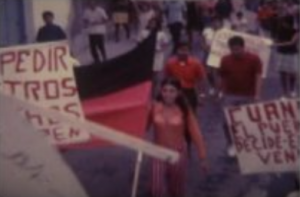
"El guión tenía una fuerte influencia de La hora de los hornos, y tendía a la explicación pedagógica de las condiciones de opresión, mostrando la diferencia entre la forma de vida de ricos y pobres y con una explicación sencilla de cómo el capitalismo sienta las bases de una explotación que finalmente es la base de las razones de la huelga [El filme muestra la huelga de Rivetex en Cuernavaca] . El título de la película (Nosotros sí existimos) jugaba con el término legal que había declarado la huelga inexistente" (Vázquez Mantecón, 2012). "The script had a strong influence of The hour of the furnaces , and it tended to a pedagogical explanation of the conditions of oppression, showing the difference between the way of life of the rich and the poor, along with a simple explanation of how capitalism sets the basis for exploitation, which is the origin of the strike [The film portrays the Rivetex strike in Cuernavaca]. The title of the film [We do exist] played with the legal term that had declared the strike non-existent" (Vázquez Mantecón, 2012).
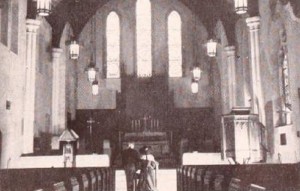
David Bradley's amateur feature film adaptation of Charles Dickens's Oliver Twist.
"Bridge construction, Meadow Brook Bridge, Maine. 'Opeechee Stream Bridge, Searsport' 'The Gypsie Bridge Builders enjoy the summer breezes of Penobscot Bay while replacing one of the few stone bridges remaining on Route 1.' Detailed documentation of bridge building in rural Maine." oldfilm.org
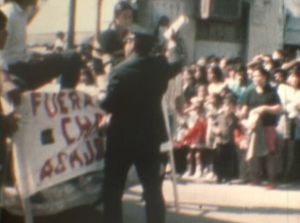
"En este cortometraje se narra la resistencia al régimen en la ciudad de Monterrey, en el estado de Nuevo León, a través de varios frentes: la irrupción de un grupo de sindicalistas independientes en el desfile oficial del 20 de noviembre, con la presencia del gobernador Luis M. Farías; la invasión de tierras y la presencia de organizaciones vecinales en Topo Chico; los muertos por un accidente laboral en la Fundidora Monterrey; las huelgas de obreros de la CTM y de panaderos de la CROC (dos poderosos sindicatos oficiales), o la actividad vecinal del Grupo 2 de Octubre en la colonia Días Ordaz" (Vázquez Mantecón, 2012).
"This short film tells the story of the resistance against the regime in Monterrey city, in the state of Nuevo León, through several perspectives: the irruption of a group of independent union laborers in the official November 20th parade, with the presence of governor Luis M. Farías; the invasion of land and the presence of neighborhood organizations in Topo Chico; the dead by a working accident in Fundidora Monterrey [Monterrey Foundry]; the strikes of CTM workers and CROC bakers (two powerful official labor unions), or the activities of neighbors of the October 2 Group in Diaz Ordaz vicinity" (Vázquez Mantecón, 2012).
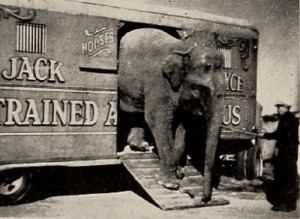
"What happens behind the scenes is always of interest to curious people — and most of us are curious. Remembering the delighted boys who sometimes get odd jobs in the backyard of the circus, Guy Nelli elected to let us see what they have seen, in Outside the Big Top. Not once are we shown the performance for which the whole effort is made, since Mr. Nelli very properly stays outside with his camera. Beginning with interesting and well filmed scenes of the circus in its early morning arrival, Mr. Nelli shows us how the Big Top is set up and carries us along until the show has ended. Odds are that he is a persuasive talker as well as a fine movie maker, because he got some of the best portrait and "candid" scenes of the performers that one will meet in many a day." Movie Makers, Dec. 1945, 496.
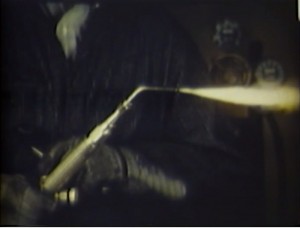
"Good teaching films are not easy to produce, and welding activities are not easy to film. In making this picture, Ray Garner and the Harmon Foundation have solved both problems in a highly satisfactory manner. The procedures are clearly and simply outlined in titles which are combined with unusually fine camera work, to produce a well integrated whole. Done almost entirely in closeups, the actual welding scenes show perfect exposure and, in many instances, very interesting angles. The film was made at Hampton Institute, in Virginia, and a student demonstrates the proper techniques in procedure. The title art work was especially good in this film, and the entire production showed the effects of a well organized plan and a careful procedure." Movie Makers, Dec. 1942, 509.

"Documentary: On peasant farm life in Korea, the rice crop and family labor." National Archives.
"'Rice,' a three reel subject in the educational class entered by F. C. Ells of Yokohama, Japan, demonstrated a fine appreciation of production and photographic values as well as how to combine it so as to make entertainment. Many were of the opinion that this picture, if it were in 35mm, would be worthy of professional theatre presentation." American Cinematographer, Dec. 1933, 321.
"In Rizumu 1932 nen (Rhythm 1932, 9.5mm, 1932), Kaneko played with rhythm by means of editing, this time by thematizing a large construction site where he captured machinery and workers. While he did not use as many shots of short duration as he did in Kōkyōgaku, he meticulously combined close-ups with various shots of low and skewed angles. In his personal memo, Kaneko left only a one-sentence description of Rizumu 1932 nen, suggesting that the film reflected his effort to create a rhythmic composition by integrating themes and styles." - Noriko Morisue, "Filming the Everyday: History, Theory, and Aesthetics of Amateur Cinema in Interwar and Wartime Japan" (Yale University: PhD Dissertation, 2020): 110.
"'Ry-Lock,' a most unusual subject produced by E. G. Thompson, of Oakland, California. Apparently, Mr. Thompson is either connected with a lock manufactory, or in a position to know a great deal about this work through friends or relatives in the business. At any rate, he combined cinephotography and lockmaking to produce an usually interesting film of considerable pictorial merit. He took the making of a lock as his subject, and followed its evolution from the raw materials and blueprint through all of the processes of manufacture and assembly, up to the finished product, inserted in a door and ready for use." American Cinematographer, Feb. 1934, 415.
Total Pages: 8